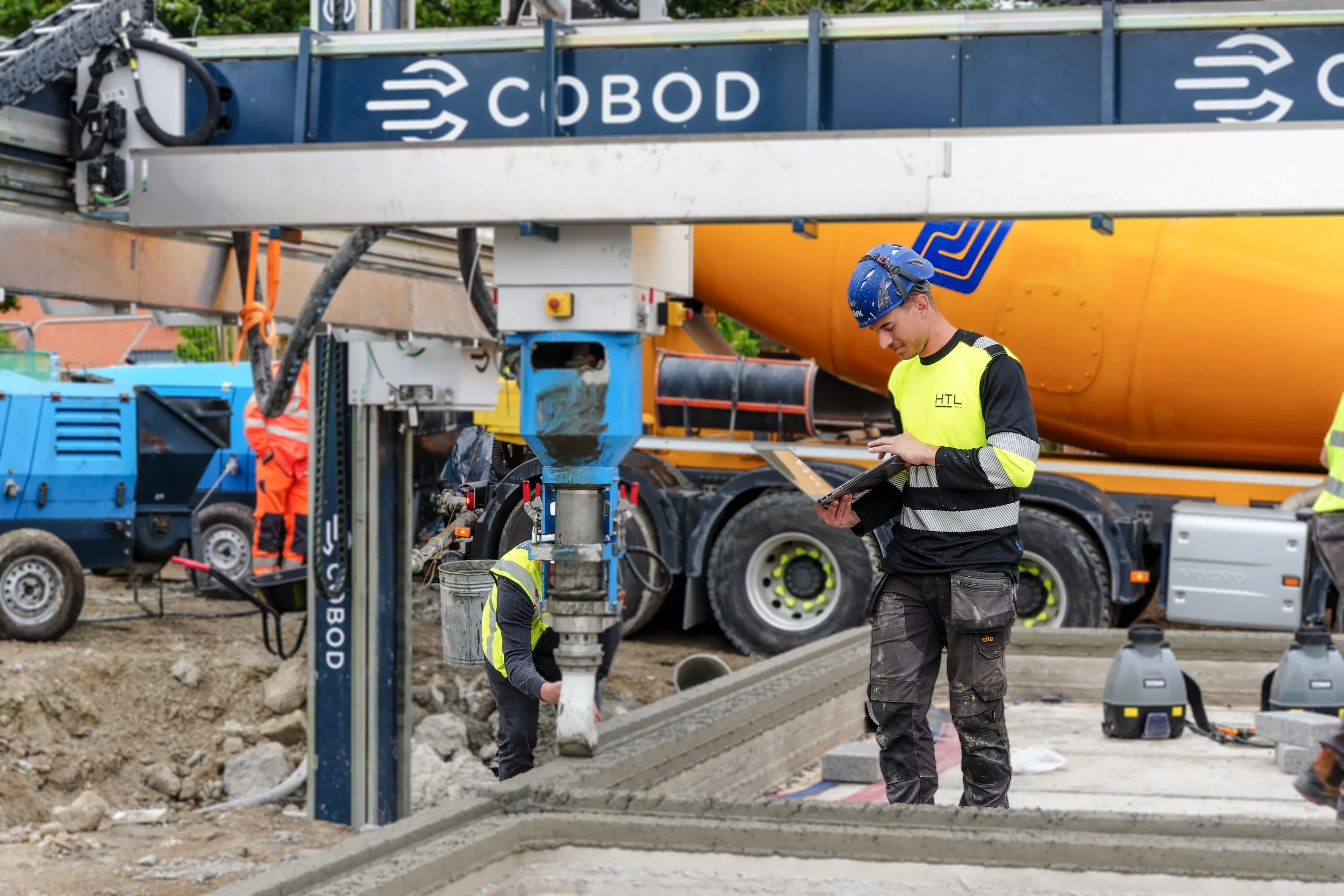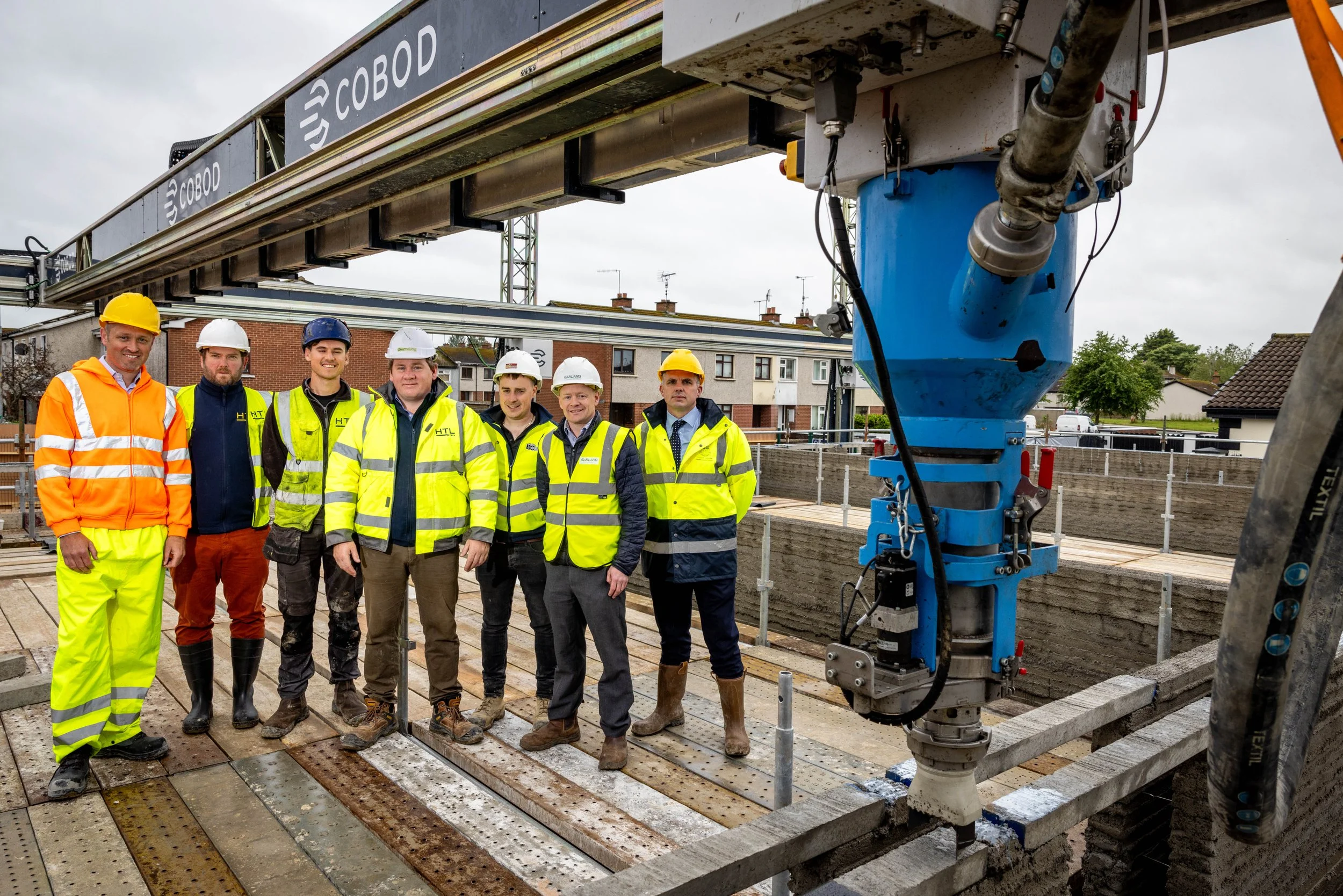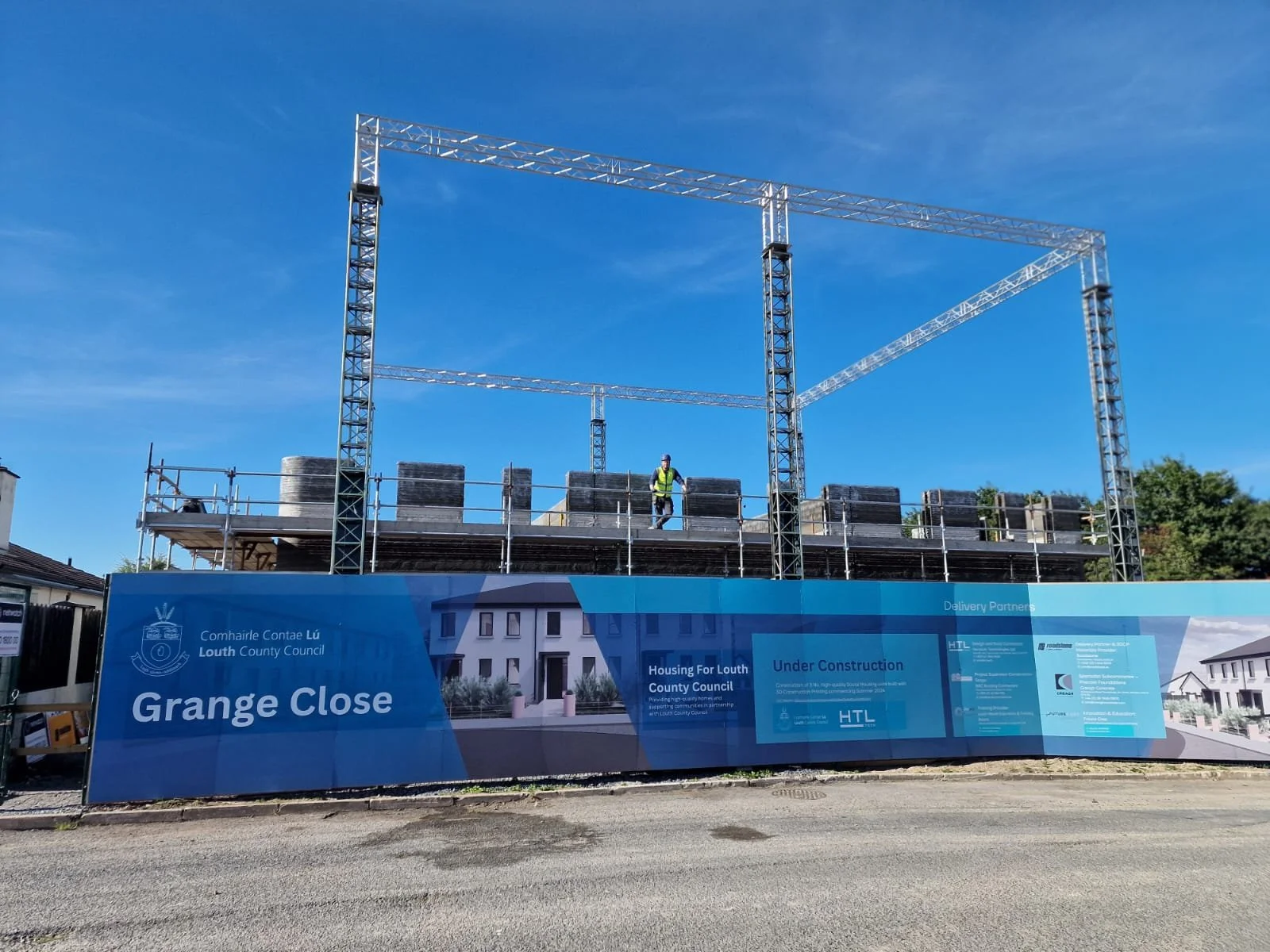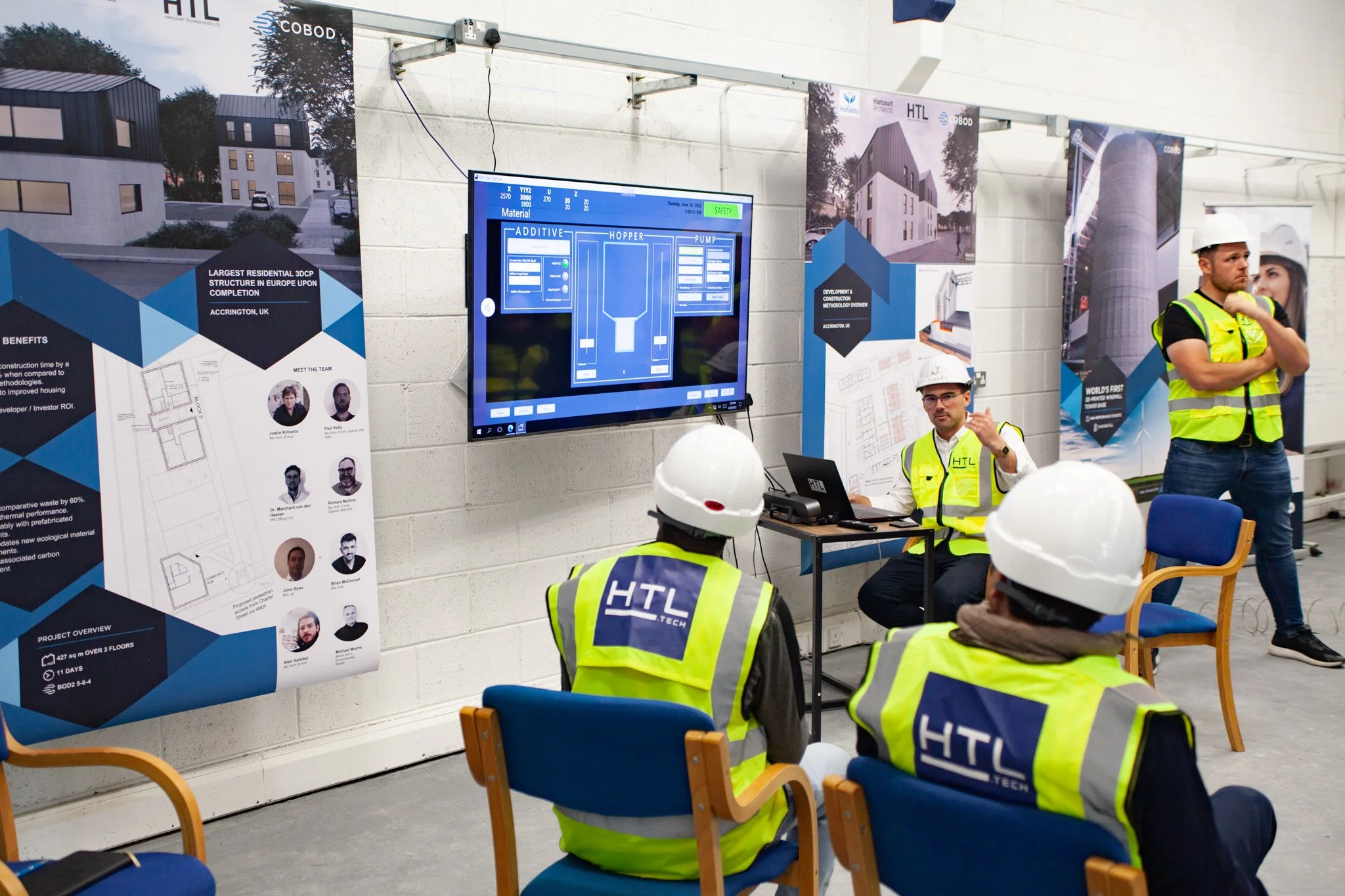Ireland's First 3D Printed Homes Being Built In Dundalk
In Dundalk, a 3D concrete printing machine has been constructing new homes layer by layer over the past two weeks. These three social housing units at Grange Close will be Ireland's first 3D printed homes. The technology accelerates the construction process and reduces labor requirements. Using a gantry-mounted 3D concrete printer, which follows a digital blueprint, the machine extrudes concrete to create cavity walls without the need for traditional concrete blocks. "It's like building a concrete block wall, but the machine lays 50mm layers instead of manual placement," explained Justin Kinsella, Managing Director of Harcourt Technologies (HTL).
"As architects and engineers, we design the building digitally, and the model guides the printer to extrude the material layer by layer," he said.
HTL, the construction tech company introducing this innovation to Ireland, claims the Dundalk homes will be built three times faster than traditional methods, with completion expected by October.
Kinsella also mentioned that this method uses a third of the labor typically required and shortens the construction timeline by 25-30%.
"Labor is reduced by about a third, and construction speed is tripled compared to manual methods. Overall, the construction process is 25-30% faster, and we expect further optimizations," Kinsella added. Currently, it takes the 3D printer about 18 minutes to lay a 50mm layer of concrete around the three-unit block in Dundalk, with hopes to reduce this to 12 minutes next week. In terms of cost, this method is comparable to traditional concrete block construction. "The real cost benefit lies in the speed of delivery. Costs can drop significantly if construction time is reduced by 25-30%," Kinsella stated.
From left to right - Patrick Diviney (Commercial Manager, Roadstone), Paul Kelly (Director of Projects, HTL.tech), Jandre Oosthuizen (Director of Materials & Operations, HTL.tech), Justin Kinsella (MD & Co-Founder, HTL.tech), Michael McBride (Project Manager, B&C Building Contractors), Simon Dunne (Regional Director, Garland), Brendan McArdle (Executive Engineer - Housing – Capital Projects, Louth county Council)
Before starting the Dundalk project, HTL built two test houses at their R&D facility in Drogheda. Kinsella emphasized that housing remains the company's primary focus. "We need technology that can do more with fewer resources, and this technology increases housing output with the same resources," he said. HTL also highlights the sustainability of this method. The concrete used is the "lowest carbon embodied printed concrete globally," with minimal waste due to precise material placement.
For builders, 3D printed houses are a novel concept. Michael McBride, Project Manager at B&C Contractors, noted that they have been constructing homes using various methods for 50 years and welcomed the addition of 3D printing technology. "It's great to incorporate this into housing developments," he said, noting that B&C Contractors build about 500 houses annually in the northeast and Dublin. McBride mentioned that the 3D printer has not significantly changed their process, as it still involves standard cavity wall construction but in an automated manner. "It's an automated process rather than a labor-intensive or off-site manufacturing process," he explained. McBride believes that 3D concrete printing "definitely has a place" in the industry. "The finished product is superior in strength to other methods we're using, so it's likely to become more prevalent," he said.
Training is already being offered to prepare for the technology's wider adoption. The Louth Meath Education and Training Board (LMETB) has acquired its own 3D concrete printer as part of its Advanced Manufacturing Training Centre of Excellence.
LMETB collaborates with HTL to provide this training at their Drogheda R&D facility, with over 100 people having completed the program. Sadie Ward McDermott, Director of Further Education and Training at LMETB, emphasized the importance of this technology in meeting housing demands and addressing labor market challenges.
"In Ireland's strong economy, labor market challenges exist. This technology allows companies to expand despite these challenges," she said. McDermott noted that the technology "augments" rather than replaces traditional construction roles. "Building a house with a 3D printer doesn't eliminate the need for craftsmen like electricians and plumbers," she said. "But it significantly increases the speed and scale of construction, crucial for meeting housing needs."
Kinsella from HTL agreed.
"The technology isn't autonomous; trained personnel are essential. The machines need human support, making LMETB's role critical," he said.
Once completed, the three-bedroom units will provide homes for three families on Louth County Council's social housing list, with the land for the pilot scheme provided by the Local Authority. CEO Joan Martin mentioned that LMETB approached her to showcase local company Harcourt Technologies and their new construction technology. "Louth always aims to be at the forefront, and here we are again with Ireland's first 3D concrete printed houses," she said. While confident in the technology, Martin acknowledged that efficiency and speed improvements are expected in future projects. Other county councils have shown interest in the project, sending representatives to observe the process on-site. "It's only by seeing it in action that you fully understand it. This is something entirely new," Martin remarked.
From left to right - Patrick Diviney (Commercial Manager, Roadstone), Joan Martin (Chief Executive, Louth Co. Council), Justin Kinsella (MD & Co-Founder, HTL.tech)





